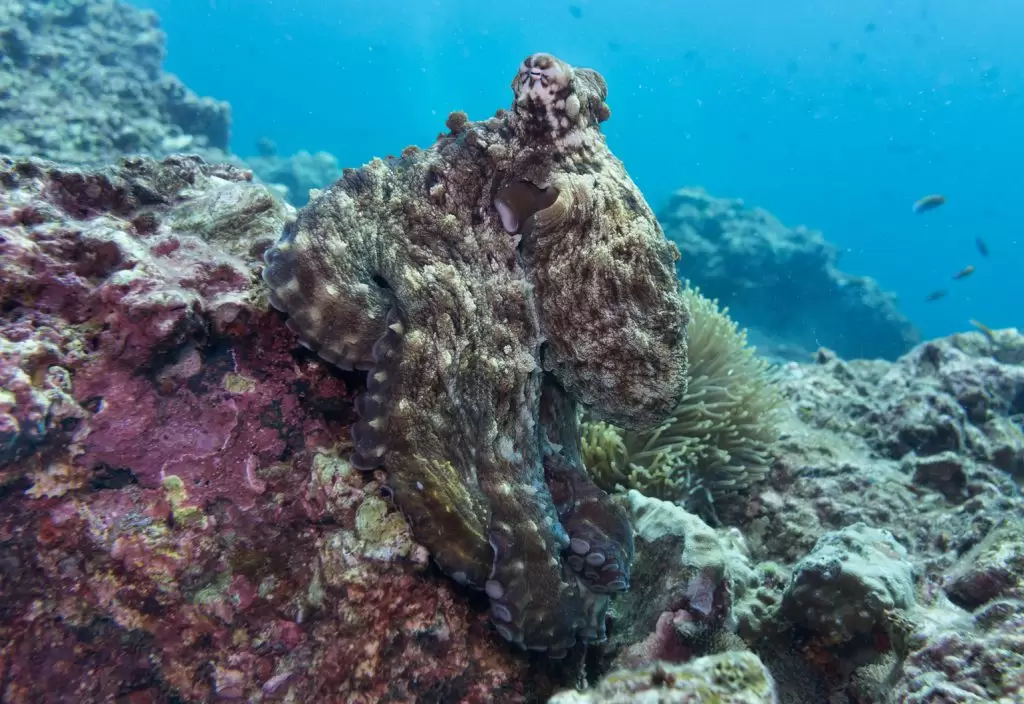The power of invisibility sounds like something from the mystic worlds of Harry Potter or Lord of the Rings, but a team of researchers is taking inspiration from the camouflaging abilities of the octopus to engineer a material that can conceal objects from sight and infrared sensing.
Coleoid cephalopods, a group of animals that includes octopuses, squid and cuttlefish, have long been admired for their singularly impressive hiding abilities. Efforts to create cloaking devices usually mimic one function or another of this adaptation.
For example, last year researchers designed a robotic skin that mimics the unique 3D camouflage abilities of cephalopods. The design took a cue from a unique structure in the animal’s skin called papillae, which are small skin bumps that allow them to manipulate their texture to look like algae, rocks, bits of seaweed or other objects in their surroundings.
More recently, a team of engineers from the University of California – Irvine (UCI) looked to another characteristic of cephalopod skin that makes it a master of disguise: how the animal can completely alter its colour in a few seconds.
Now you see it, now you don’t
This ability is made possible by layers of pigment embedded within the cephalopod’s skin. According to the UCI researchers, the patterning and colouration of cephalopod skin can be altered autonomously and repeatedly.
“Such remarkable feats of camouflage are enabled by the sophisticated architecture of the squid’s soft and flexible skin, in which innervated dermal layers contain chromatophore pigment cells (as part of larger chromatophore organs) and reflective cells called iridocytes,” they stated.
The chromatophore pigment cells usually contain some combination of black, brown, orange, red and yellow cells. When the cells contract the pigment is diluted, allowing the animal to blend into a lighter background; when they expand, the pigment becomes more visible, allowing them to blend into a darker background.
These cells are always ‘on’ and constantly changing, like in the footage below, which shows chromatophore pigment cells in a live octopus. This translates into an uncanny ability to blend into almost any background as they move around their environment.
Iridocytes, which are similarly sensitive to outside stimuli, are the property that enable octopuses and other coleoid cephalopods to alter the wavelengths of light they reflect.
“These iridescent cells feature response times of tens of seconds and function like reconfigurable biological Bragg stacks that reflect visible light of variable wavelengths,” stated the researchers.
Basically, these cells help the skin of cephalopods “behave like a dynamic bioelectronic display”. The UCI team used this concept to create a material that mimics the interaction between the two cell groups, as outlined in their recently published paper in Science. But instead of reflecting light their material reflects heat, allowing it to avoid infrared sensors.
The material consists of a proton-conducting bottom electrode, a dielectric elastomer membrane, a proton-conducting top electrode and an infrared-reflecting coating. When stretched or zapped with an electric current, its texture changes, going from wrinkled to a smooth, glossy surface and back again in a second.

“It goes from wrinkled and dull to smooth and shiny, essentially changing the way it reflects heat,” said Alon Gorodetsky, a professor of chemical engineering and materials at UCI, and head of the Gorodetsky Group for biomolecular electronics.
The developers produced two different types of coatings to also test how the material performed when subjected to different infrared wavelengths. Initial tests showed the material performance matched or exceeded other existing adaptive infrared camouflage technologies. According to the developers, these abilities could also translate to the visible spectrum.
What can we do with it?
Although previous replications of cephalopod skin relate to physical appearance, this is one of the first examples of heat adaptation, which could be transformative in a number of areas.
An obvious use is in the military for covert operations and better camouflage for troops. But beyond that, the material could be used as insulation for spacecraft, storage containers and emergency shelters, in clinical care, and building heating and cooling systems.
Gorodetsky and his team said they designed the material with manufacturing and ease of integration in mind. Patents pending for this material, with plans to scale up production to larger sheets for commercial use.
